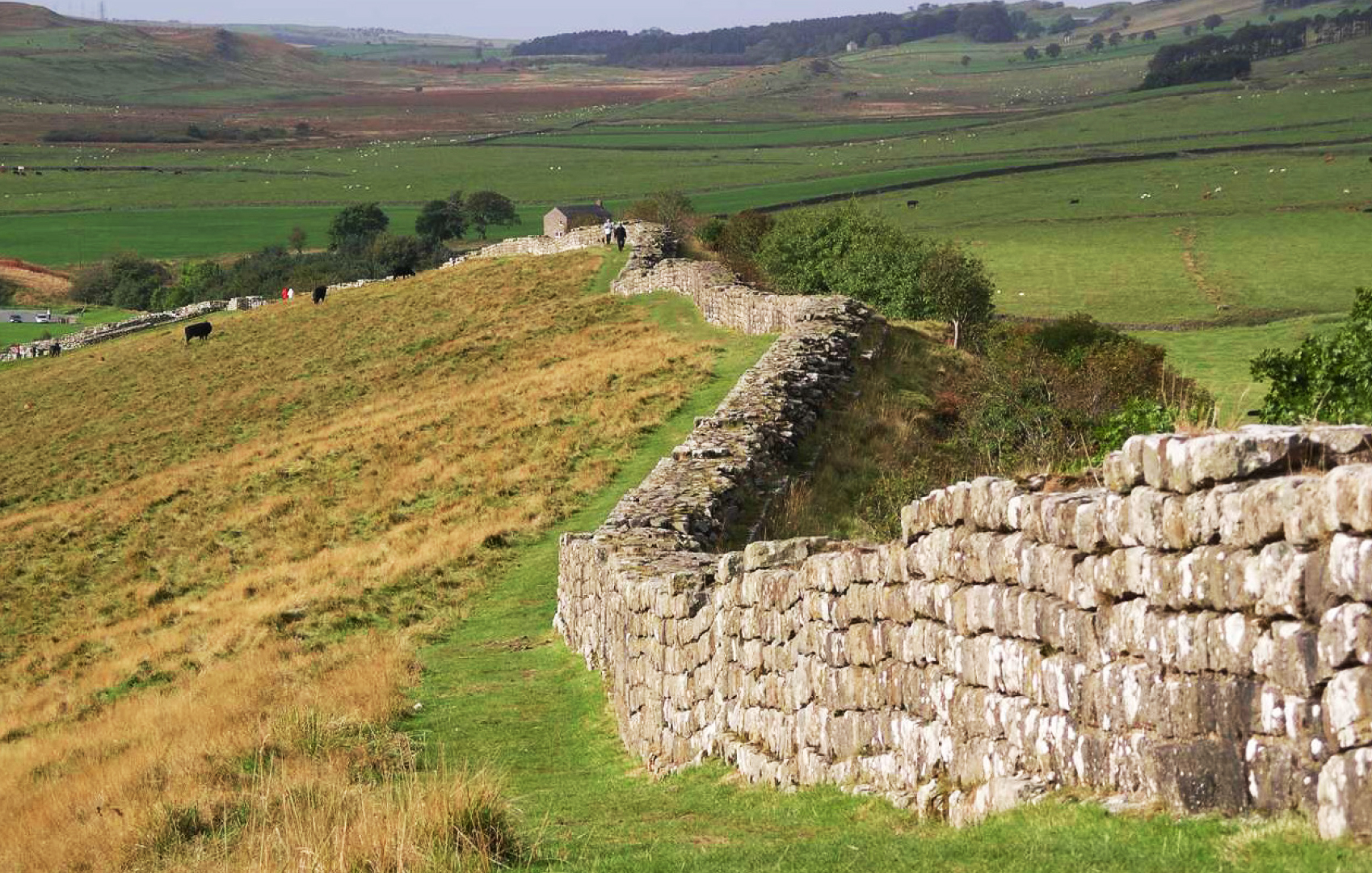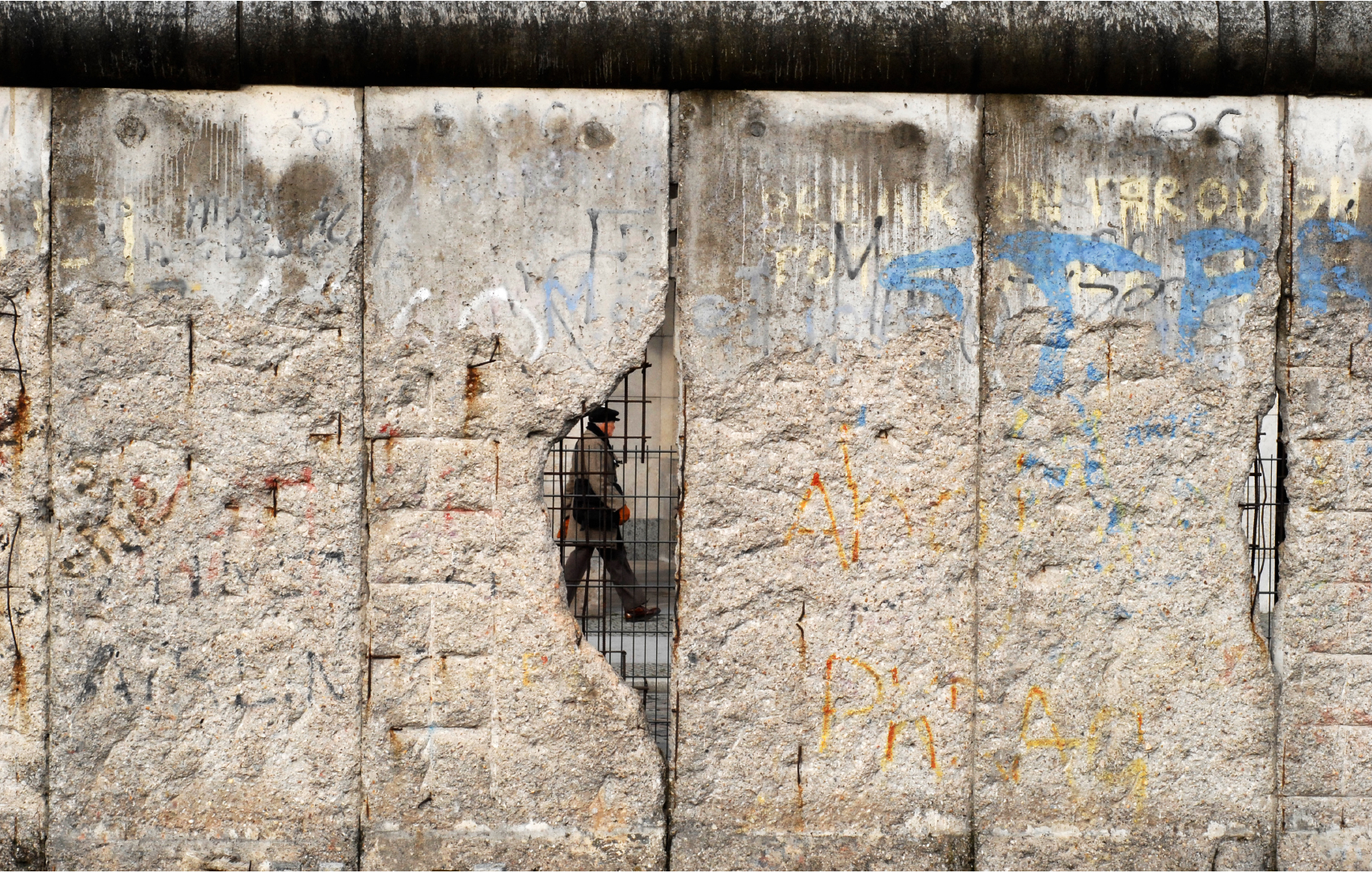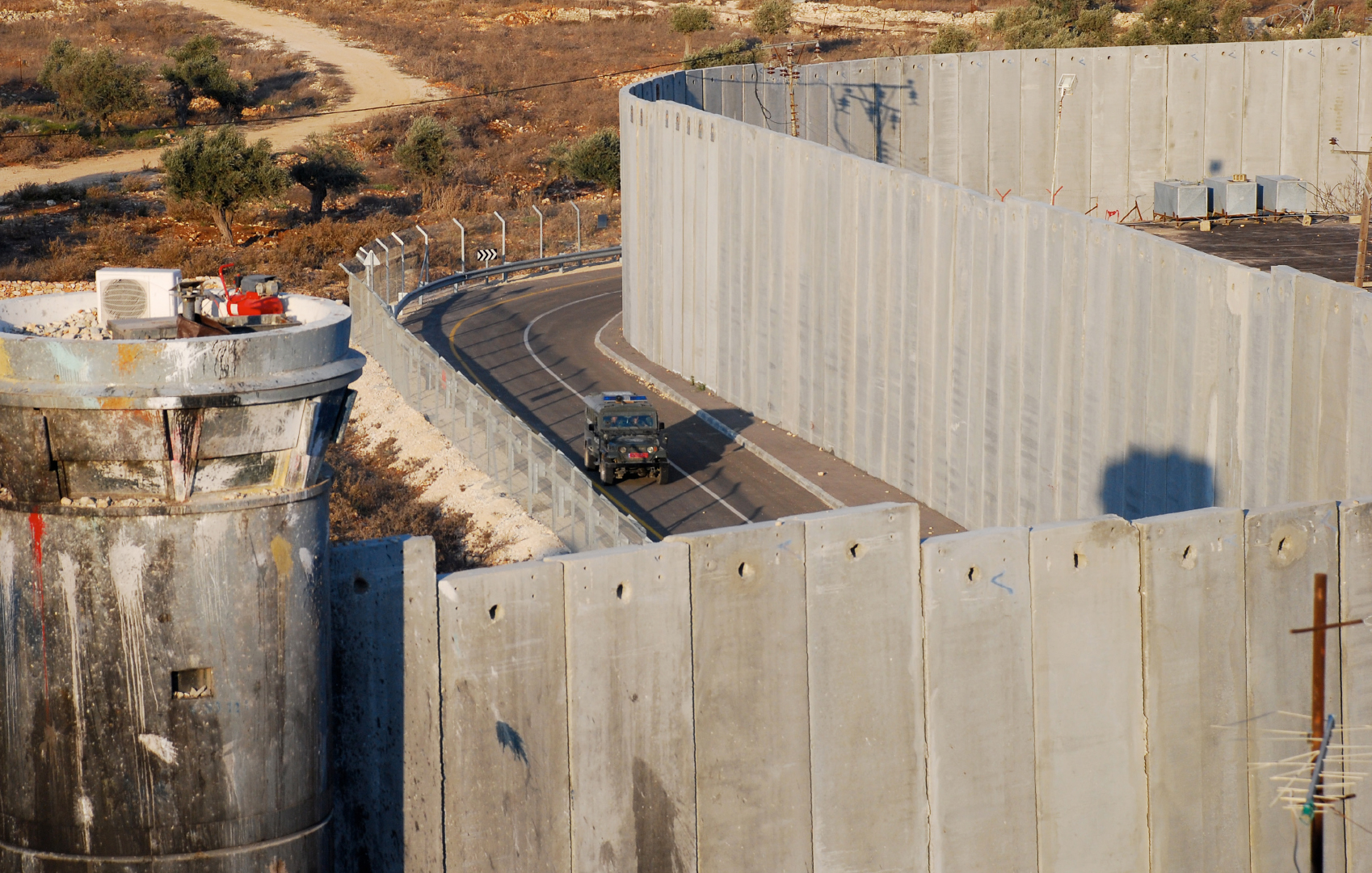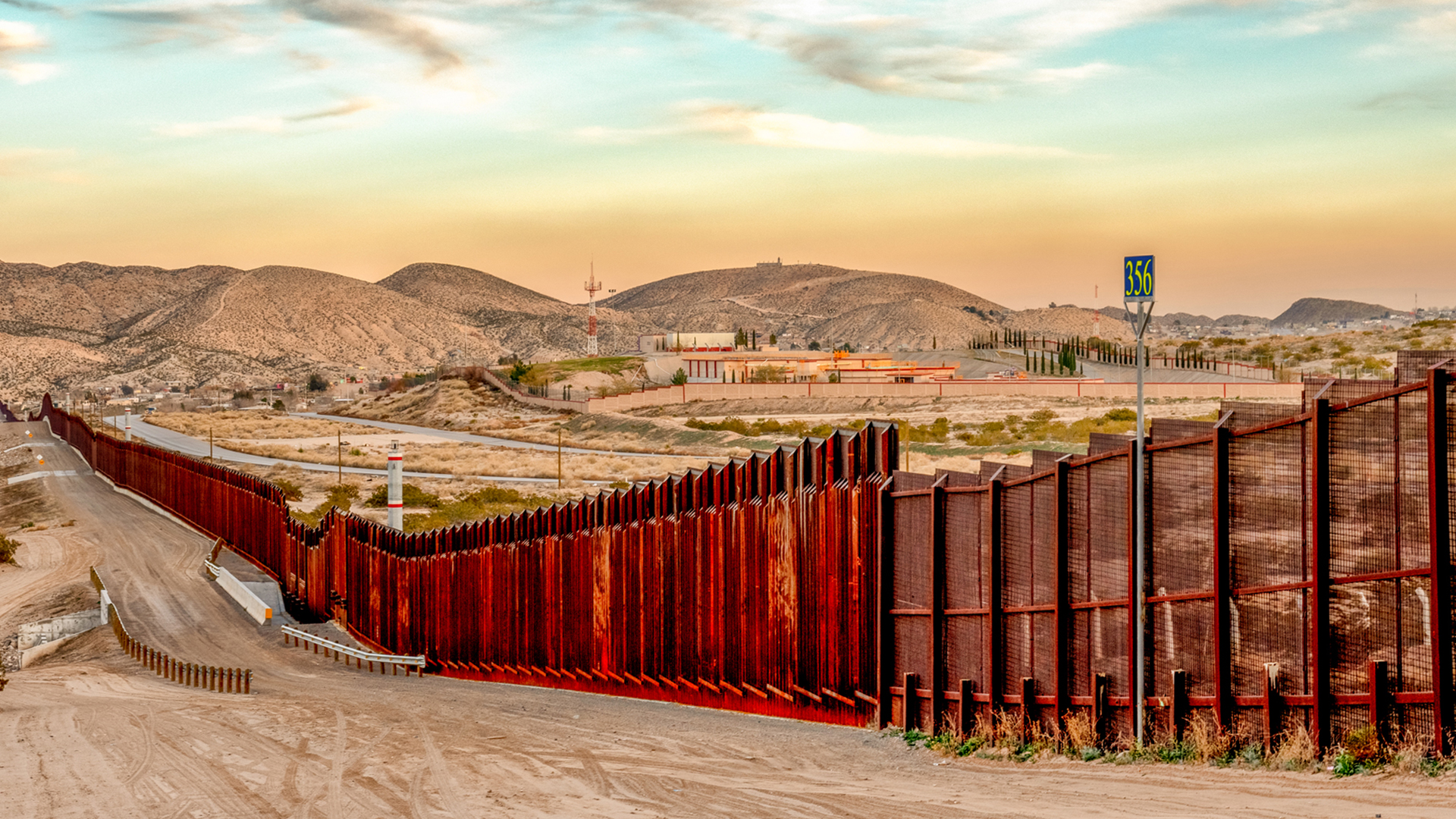Why We Build Walls
The Idea Behind Keeping Others Separate—and Unequal
Whether out of health, economic or security concerns, many nations have erected or are erecting walls at their borders. What can this teach us about ourselves?
In the opening months of 2020, newspaper headlines everywhere focused on the global spread of COVID-19 as one nation after another took steps to contain the disease. Some governments were slower on the uptake than others, apparently hoping that their nation could be walled off from the virus at its borders, and that the disease would thus have little effect there.
The speed with which the illness spread served to show how flawed that approach was. While most experts agreed that limiting both local and international movement of people would be essential to “flattening the curve” of new infections and deaths, thinking that a virus could be stopped by closing borders, thereby erecting a virtual wall around a nation, proved shortsighted at best.
The concept of walling ourselves off from others has a long history. The pandemic, in fact, took the spotlight off another much-publicized wall: the barrier that US president Donald Trump wants to erect along the US-Mexico border. Congress and federal judges continue to struggle behind the scenes on the funding and building of that wall. The debate centers on questions of border security, illegal immigration, narcotics trafficking, and whether the wall would really help on any of those fronts. Still, in March 2020, US Customs and Border Protection (an agency of the Department of Homeland Security) announced that the government had just awarded a $175 million contract for building a new 15-mile section of the barricade along the Texas border. The president also asked that construction of the wall in Arizona be sped up to help keep out migrants who might be carrying the coronavirus with them. On March 10 he tweeted, “Going up fast. We need the Wall more than ever!” Meanwhile Democrats continued to pursue legal challenges to the project.
As with other issues, American voters generally side with their party in this debate. A 2019 Pew Research Center article noted that “around eight-in-ten Republicans and Republican-leaning independents (82 percent) support expanding the wall, while an even larger share of Democrats and Democratic leaners (93 percent) oppose it.”
Taking a position on the construction of a US border wall is not the purpose of this article. But perhaps it’s worth probing a little deeper and asking why human beings build walls in the first place. It may come as a surprise, but since the Berlin Wall fell just over 30 years ago, more than 60 walls, fences and other barriers have gone up along borders around the world.
Why does any nation-state feel that it needs to be enclosed within a physical barrier? Is a wall the best way to ensure safety from outside forces? A brief survey of a few prominent border walls from the past and present may suggest some answers.

Hadrian’s Wall
Hadrian’s Wall represented the frontier, or limit, of the Roman Empire in Britain and is one of a series of walls that stretched more than 3,000 miles (5,000 km) across Europe—from Britain’s Atlantic coast to the Black Sea to North Africa and back to the Atlantic. It spotlights a key reason behind organized wall construction.
Commissioned by the Roman emperor Hadrian around 122 CE to keep the Romans separate from other peoples on the island, the wall stretches 73 miles (118 km) along what was the empire’s northernmost border. Researcher and journalist Tim Marshall notes that “parts of [the wall] were fifteen feet high and ten feet deep. A thirteen-foot-deep, thirty-foot-wide ‘fighting ditch’ was dug in front of it. Between the two were thickets of spikes. The numerous gates were fortified, and at every Roman mile along the wall was a small fort, and between each of these two turrets. On one side of this wall was ‘civilization,’ on the other ‘barbarians.’”
To northern onlookers (the so-called barbarians), construction of such a structure by perhaps 15,000 Roman soldiers must have been impressive. But to say that a wall divided civilization from barbarism is to suggest that the two were qualitatively opposite. Today, that is indeed how the two words are generally understood. Civilization suggests an advanced state of social and cultural development and/or organization, whereas barbarism connotes savagery—the absence of culture or civilization. These modern meanings oversimplify the context within the Roman Empire, however. Barbarians, in ancient times, were simply those of any culture other than Greek or Roman; they were foreigners.
“The notion that ‘civilization’ is a condition superior to ‘barbarism’ underlay Victorian doctrines of racial superiority of more than a century ago and lives on today in the popular understanding of the word. But it has no place in archaeology.”
What was Hadrian’s purpose for building the wall? Archeologists Christopher Scarre and Brian M. Fagan note that “archaeologists and historians have long debated whether Hadrian’s Wall was an effective military barrier. . . . Whatever its military effectiveness, however, it was clearly a powerful symbol of Roman military might. The biographer of Hadrian remarks that the emperor built the wall to separate the Romans from the barbarians. In the same way, the Chinese emperors built the Great Wall to separate China from the barbarous steppe people to the north. In both cases, in addition to any military function, the physical barriers served in the eyes of their builders to reinforce the conceptual divide between civilized and noncivilized. They were part of the ideology of empire.”
Romans saw their society and their ways as more civilized than that of the foreigners at their borders. The ideologically based message conveyed by Hadrian’s Wall was that, by virtue of being Romans, “we are superior and you are inferior.”

The Berlin Wall
Competition between peoples and claims of superiority, after the pattern of the Romans and their neighbors, is common throughout history. A more recent example of a resulting border wall—this time one designed to keep people in as opposed to out—is the Berlin Wall, which stood for 28 years as the archetype of Winston Churchill’s “Iron Curtain.”
As might be expected, the underlying issues are complex; but at its most basic, the Berlin wall was a manifestation of the competition that had arisen between the Soviet Union and various Western democracies, including the United States and the United Kingdom. Central to the conflict was not only which peoples were superior but which political-economic ideology—capitalism or communism—was better. We know that struggle today as the Cold War.
The contest for ideological superiority between East and West was perhaps nowhere more directly evident than in Germany; from 1945 to 1961, opposing (and by default competing) governments in the divided nation were eager to prove the superiority of their system. Over time, however, ordinary citizens couldn’t help but conclude that the capitalism of West Berlin and West Germany was economically more viable than the East’s communist system.
Marshall describes how it played out in Berlin: “Just by looking out a window or crossing a street, ordinary people in the East could see the spectacularly successful rebuilding of West Germany. . . . Every day that people were able to witness the progress was a blow to the idea that the Soviet system was superior. . . . Before the wall went up, so many East Berliners had opted to migrate to the Western sectors, either to work or live permanently, that the East German economy was in dire straits. About 2 million had voted with their feet in the previous decade [1950s], and the flow was increasing.”
“Between January 1960 and the end of July 1961 another 330,000 people moved West. East Germany was losing its workforce and its credibility.”
Russia’s politically violent history did little to help East Germans adapt to the idea of a communist parent. As the populace fled westward, the loss of human capital threatened to further cripple an already limping postwar economy. The Soviet solution was to imprison those Berliners who lived in the Soviet sector of the city (which had been divided among four Allied powers at the end of World War II). To prevent any further migration, Moscow granted approval to begin erecting a barrier on August 13, 1961, effectively cutting the city in two overnight.
Again, Marshall provides some details: “For the first few years it consisted of occasional stretches of wall, but mostly of blocked-off streets, walled-up windows, and stretches of barbed wire. But within a decade a concrete wall was reinforced by watchtowers, bunkers, electric fences, dogs, automatic shooting ranges, and hundreds of armed guards.”
From 1961 to 1989, at least 140 people lost their lives in connection with that wall. This is a conservative estimate; some believe the number is much higher. The Berlin Wall demonstrates the extremes to which a faltering government may go in an effort to stay true to an ideology—even when people’s lived experience leads them to conclude that a different ideology is preferable.
The Berlin Wall also serves as proof that if built and maintained effectively, border walls can work as intended; they can keep people in or out. On that basis, Marshall asserts that the wall was a success: during its existence, only about 5,000 escaped safely.

Israel’s Border Walls
If the East German government showed that even an initially rudimentary border wall can stop people from entering or exiting an area, Israel has become a model in the use of highly advanced technology for the same purpose.
“By 2002,” writes historian David Frye, “the government had commenced work on a barrier that would eventually stretch 450 miles and spawn several more walls totaling hundreds more miles. The West Bank Wall . . . features various technological advances, many cribbed from the old Iron Curtain barriers. Infrared night sensors, radar, seismic sensors, balloon-borne cameras, and unmanned, remote-controlled Ford F-350 trucks, equipped with video cameras and machine guns, augment the wall’s concrete slabs and concertina wire.”
The West Bank Wall was a response to ongoing conflict between the State of Israel and the indigenous Palestinians. The breakdown of the Camp David peace talks in 2000 led to the Second Intifada and a lengthy campaign of Palestinian suicide bombings. Vision publisher David Hulme noted in his book Identity, Ideology, and the Future of Jerusalem that the bombings accelerated Israeli efforts to erect the West Bank wall of separation around Jerusalem. The ongoing relationship between Israelis and Palestinians has been incredibly difficult because of the mistrust and hatred spawned by decades of mutual hostility and mistreatment.
Some on both sides, however, understand that it doesn’t have to be this way. In an interview with Vision, Israeli political scientist Menachem Klein laid out the path to agreement: “Successful negotiation is based on trust, and sharing information with the other. . . . No less important is the following: relate to the other side as partner and as equal. Don’t be arrogant because you have a state and they don’t, or you are a professor or army general and they are just employees or whatever. Relate to them as human beings fully equal to you. This is a very basic element in talks; it’s hard to achieve, but it’s necessary in order to get an agreement.”
In another Vision interview, Mohammad Shtayyeh (who in 2019 became Palestinian prime minister) struck a similar tone: “At the end of the day, the Israelis have to realize that we [the Palestinians] are going to stay here, and they have to live with us; and we have to realize that they are staying there, and we have to live with them. So therefore we have to involve—both of us, we and them—a lot of peace education for the future generations.”
Likewise former Israeli prime minister Shimon Peres, commenting on the disparity between the two peoples who share the land, told Vision in early 2000 that “the better the Palestinians shall have it, the better a neighbor we shall have.”
“I believe that the answer to security is better relations and not better fences.”
Outlining further developments of the last 10 years, Frye writes: “In 2011, work began on a 45-mile wall along Israel’s Syrian border. Two years later, Israel had completed a 150-mile barrier facing Egypt to its west. More recently, construction has started along the borders of Lebanon and the Gaza Strip, and 2017 saw the creation of a partial and—by Israeli standards—somewhat halfhearted fence on the Jordanian border.”
Far from improving relations between themselves and their neighbors, Israel’s border walls only exacerbate longstanding animosities. Equipped with the latest military technology, the walls hardly reflect the respect and value for the other side that Klein, Shtayyeh and Peres proposed.
It’s widely accepted that Israel’s walls, not just in the West Bank but also on its borders with Syria and Egypt, are successful in eliminating illegal immigration and greatly reducing terrorist activity. This has brought interest from other nations, including the United States, in search of means to strengthen their own borders.
To Build or Not to Build
If success is partly defined as the removal of a problem such as illegal immigration, then not only Israel’s but many walls throughout history have been successful. But maybe even greater success can be attained when peoples and nations reach a level of mutual respect that eliminates the need for walls. Almost by definition, wall-building stems from an ideology based in feelings of superiority. When a government—whether Roman, Soviet, Israeli or any other—staunchly protects and defends an ideology, a wall may succeed in controlling movement; but it will also lead to frustrated relationships characterized by fear, anger, contempt and even hatred.
Klein, Shtayyeh and Peres spoke of valuing their neighbors, of treating them with respect, kindness and courtesy. That is the way to positive and mutually beneficial relationships, and it removes the need for physical barriers; it’s the way that leads to long-lasting peace and happiness.
“We are so occupied, all of us, with geography, topography, strategy, walls, fortifications, that we overlook the possibility that all those are not needed once we change the rapport between the Palestinians and ourselves.”
All of this brings us back to the issue that American lawmakers currently grapple with. But it isn’t just an American problem. Among the many other nations with new border walls (or similar barriers) are Saudi Arabia, the United Arab Emirates, Kuwait, Jordan, Turkey, Malaysia, Thailand, India, Egypt, Kenya, Algeria and Tunisia. “Walls have been put up that ought to have been unimaginable, after the Berlin Wall,” writes Donatella Di Cesare in her book Resident Foreigners (2020). “The biggest is one in France—a wall demanded and financed by Britain—next to the port of Calais, in order to block Channel crossings.”
Considering the principles we can glean from Hadrian’s Wall, the Berlin Wall and Israel’s barrier walls, perhaps it’s worth repeating Klein’s advice: “Relate to them as human beings fully equal to you.” A wall may be effective in supporting a specific ideology that seeks to control movement, particularly when it incorporates today’s technology. But while such walls do work, they also convey the superior-versus-inferior worldview of their builders; further, they foster deep-seated resentment and hostility rather than mutual respect. The Berlin Wall and its Israeli successors prove this to be true.
Regardless of national identity, we’re all human beings. Perhaps instead of walling ourselves off from one another, a more positive and effective approach to solving the very real problems that currently exist between neighboring nation-states and peoples around the world is one that emphasizes respect and the equal value of every human being, no matter their citizenship, ethnicity, religion or language.


